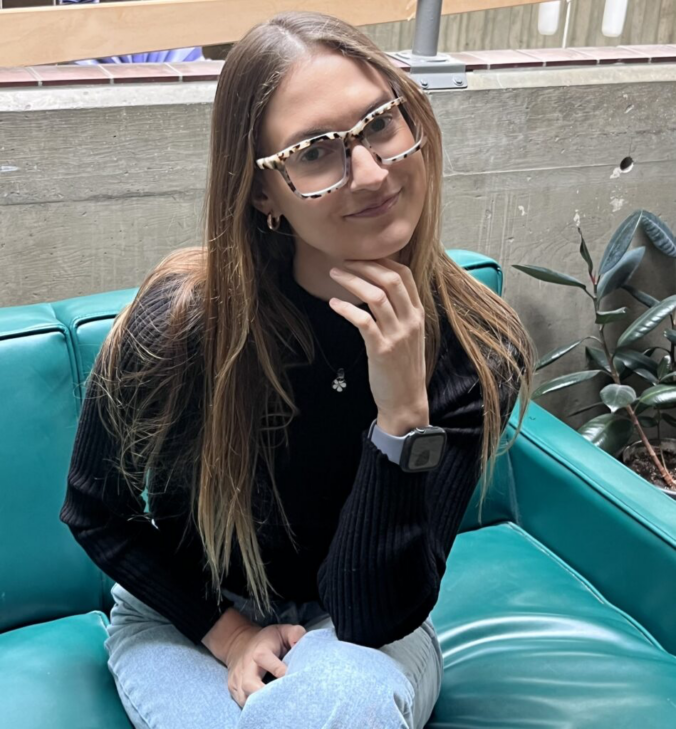https://islandteacheradventures.opened.ca/wp-admin/admin-ajax.php?action=h5p_embed&id=3
Page 3 of 6
https://onlineacademiccommunity.uvic.ca/slanggould/category/edci-338/weekly-blog-posts/
Hi Sarah,
I appreciated your point about how a PLN broadens perspective and fosters a sense of belonging through collaboration. Your reference to Simone Biles was particularly compelling; authentic voices around mental health can help make digital spaces feel safer and more supportive.
I think your post does a great job reflecting on the topic, but it might be even stronger with a clear “next step” suggestion. Could you add one or two practical ideas for making conversations more inclusive, like inviting different viewpoints or adding a short note when sensitive topics come up.
Regarding the presentation, I like the clean, easy-to-read layout. Adding a brief conclusion or subheadings such as “Why PLNs matter,” “Inclusion in practice”) might make it even easier to scan.
Please check the rubric to ensure you’ve included links or brief references to examples, like the Simone Biles post/interview, so everything required is covered.
I’d love to hear about one actionable step you plan to try next to invite diverse perspectives in your PLN.
Hi Grace (Simeng),
I enjoyed reading your reflections! I especially appreciated how you linked PLNs to specific platforms and communities; it helped make the concept more tangible. I also use LinkedIn, Pinterest, and Instagram as part of my PLN. My content mainly concentrates on elementary education, but it’s interesting to see how others utilize these platforms for different subjects, like graphic design. Your reminder that digital security is an ongoing responsibility, not just a one-time task, was also a very practical takeaway.
Could you add a concrete example for the diverse learning spaces section, perhaps from your own experience or a case study, so readers can better imagine how it works in practice?
Your post is very clear and easy to follow. The headings work well, but including a small visual showing how PLNs, digital security, and inclusivity connect could make it even more memorable. Overall, great job!
What is PLN?
A Personal Learning Network (PLN) consists of people, communities, or digital connections that support your learning and professional development. For me, Instagram and TikTok are essential parts of my PLN because of their quick, accessible, and visual content tailored for educators.
PLN in Practice: Instagram and TikTok
Instagram and TikTok are two of my favourite tools for fast, visual learning. I follow several teacher accounts that post:
- Engaging classroom games and PE game
The Claw Primary PE game explained in 30 seconds.
A post shared by Kev Weir | PE and Coaching (@just.playsports)
- Behaviour management strategies
Classroom managment strategy using refocus and celebration board.
A post shared by Karen | Classroom Management Tools (@theclassroomcues)
- Quick tips on UDL-aligned lesson planning
Instagram post below on UDL tips:
https://www.instagram.com/p/DLVe9Biykcr/?utm_source=ig_web_copy_link&igsh=aHNuc3d0dDR0ZHVz
What I love about these platforms is the bite-sized format, whether it’s a post, a 30-second reel, or a TikTok video. This kind of content sparks new ideas I can apply in my UVic BEd courses or during my practicum placements.
Universal Design for Learning
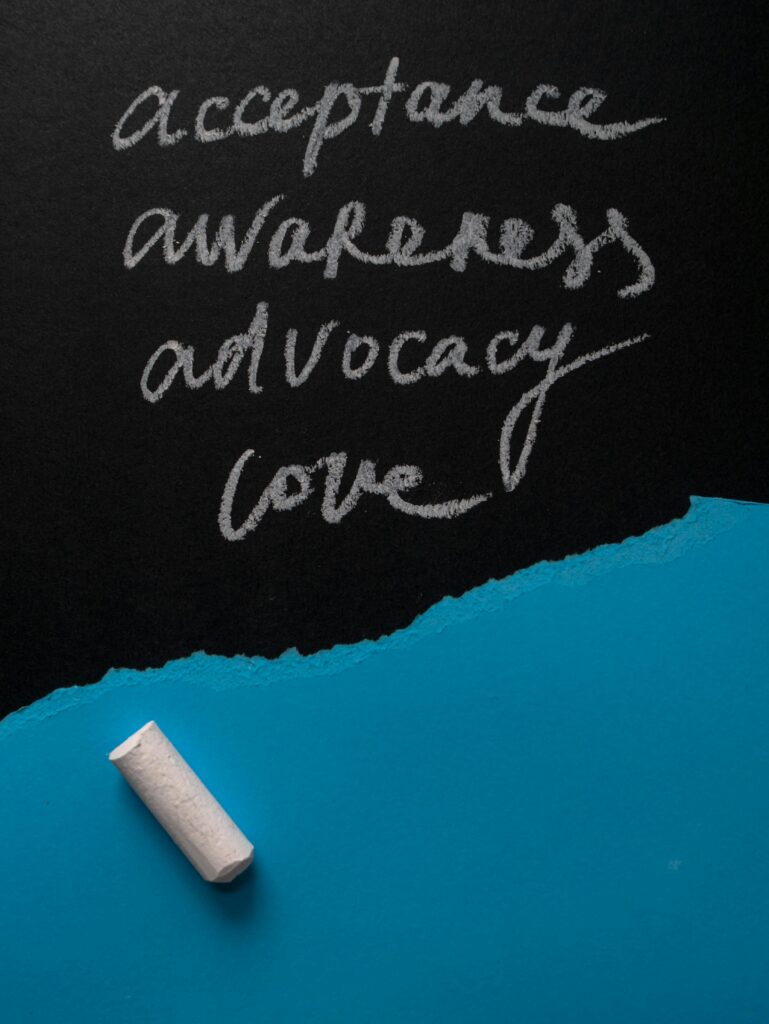
Inclusion means teaching to the diversity in our classrooms, not trying to eliminate it or treat it as a barrier.
If we look at inclusion as a concept of teaching to the diversity of all, rather than just a special education initiative, we can bridge this gap. We are diverse.”
Shelley Moore
This quote highlights that inclusion isn’t about uniformity but about appreciating our differences. Moore (2016), in One Without the Other: Stories of Unity Through Diversity and Inclusion, talks about inclusion involving recognizing and embracing individual distinctions. The image below demonstrates this idea: each dot inside the circle is unique, with its own pattern or texture, yet all are part of the same community. By acknowledging and valuing our differences, we foster unity rather than division through diversity.

UDL Principles and Inclusive Digital Learning Spaces
Universal Design for Learning (UDL) supports the same goal of fostering inclusivity. When we apply UDL principles to both teaching and our digital environments, we make learning and professional development more accessible and equitable.
- Multiple Means of Engagement: I follow creators who share learning in different formats infographics, reels, threads, and podcasts. This keeps me engaged and supports different learning preferences.
- Multiple Means of Representation: I value PLN members who present ideas in culturally responsive ways, use visual supports, or share multilingual content. This mirrors how I want to represent knowledge for students using diverse, inclusive materials.
- Multiple Means of Action & Expression: Within my PLN, I contribute by posting visuals, commenting, resources, and using blogs to reflect.
Being aware of UDL principles as I engage in digital learning spaces helps me create content that is inclusive and authentically represents who I am.
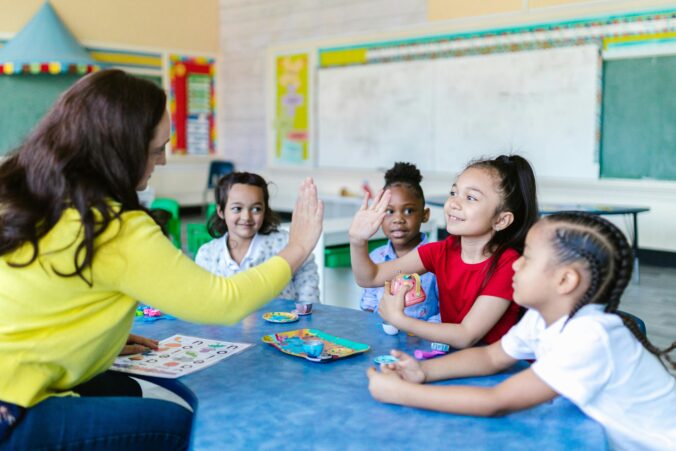
BLOG POST #2
Cooperative Learning
Cooperative learning is a structured method of group work where students rely on one another to achieve shared academic goals. It highlights intentional interaction that promotes positive interdependence, mutual support, and genuine collaboration, rather than merely parallel work on the same task (Herrmann, 2013; Davidson & Major, 2014). Each student contributes individually while being accountable to the group, encouraging both academic achievement and the development of social skills through face-to-face interaction and group reflection (Gillies, 2016).
The one that is doing the learning is doing the talking.
CAndy Olandt
Example of Cooperative Learning
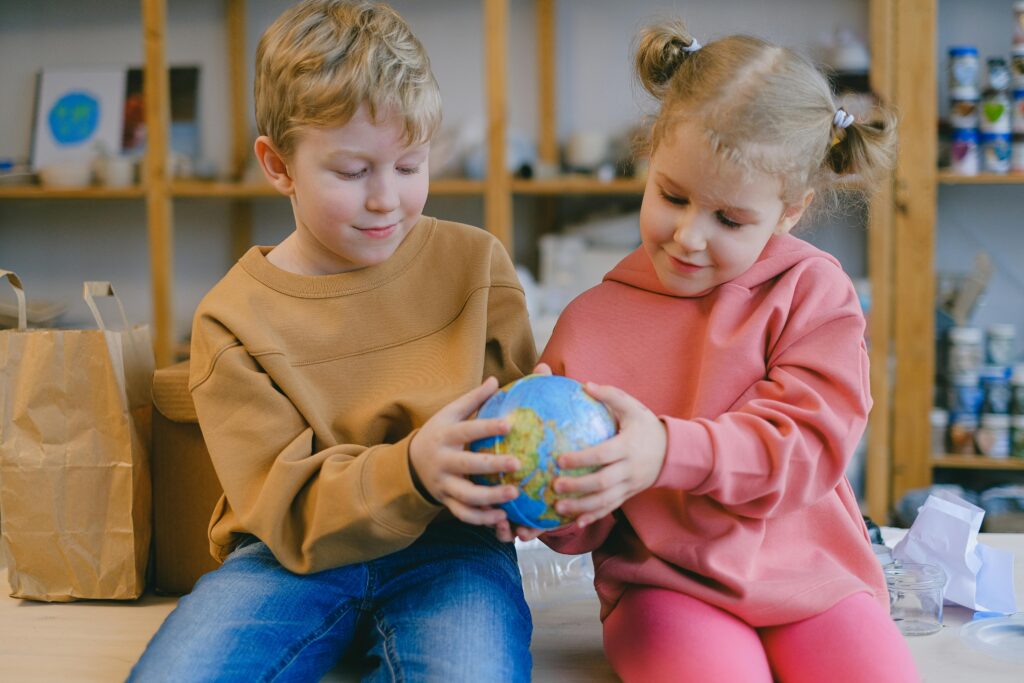
Think-Pair-Share: Students first think about questions individually, then share their thoughts with a partner, and finally, share with the whole class.
Structured heterogeneous grouping: Students are intentionally placed in diverse groups based on their abilities, personalities, and learning styles. Each student has a role, ensuring balanced participation and peer learning.

The Limits of AI in Cooperative Learning
While AI can support learning, it doesn’t always align well with cooperative learning. Cooperative learning relies on peer interaction, shared responsibility, and face-to-face collaboration. Many AI tools are designed for individual use, which can reduce meaningful group dialogue and lead to uneven participation. When students rely on AI for quick answers instead of discussing and solving problems together, it limits critical thinking and weakens social skill development. Without careful guidance, AI use can unintentionally replace rather than support the human connections that make cooperative learning effective.
In the video, “The Pros and Cons of AI in Education: What Every Educator Should Know,” educators emphasise that while AI tools are very effective for personalising learning, they can sometimes hinder collaborative learning. By promoting isolated engagement, AI might reduce meaningful student dialogue and restrict the development of critical thinking and interpersonal skills.
These concerns are growing that when students rely too heavily on automated responses, they miss out on opportunities for peer discussion and shared problem-solving, core components of cooperative learning.
Challenges and Risks of Using AI in the Classroom
- Privacy concerns around student data
- Ethical considerations, including fairness and transparency
- Reduced social adaptability due to less face-to-face interaction
- Overdependence on technology which can weaken problem-solving skills
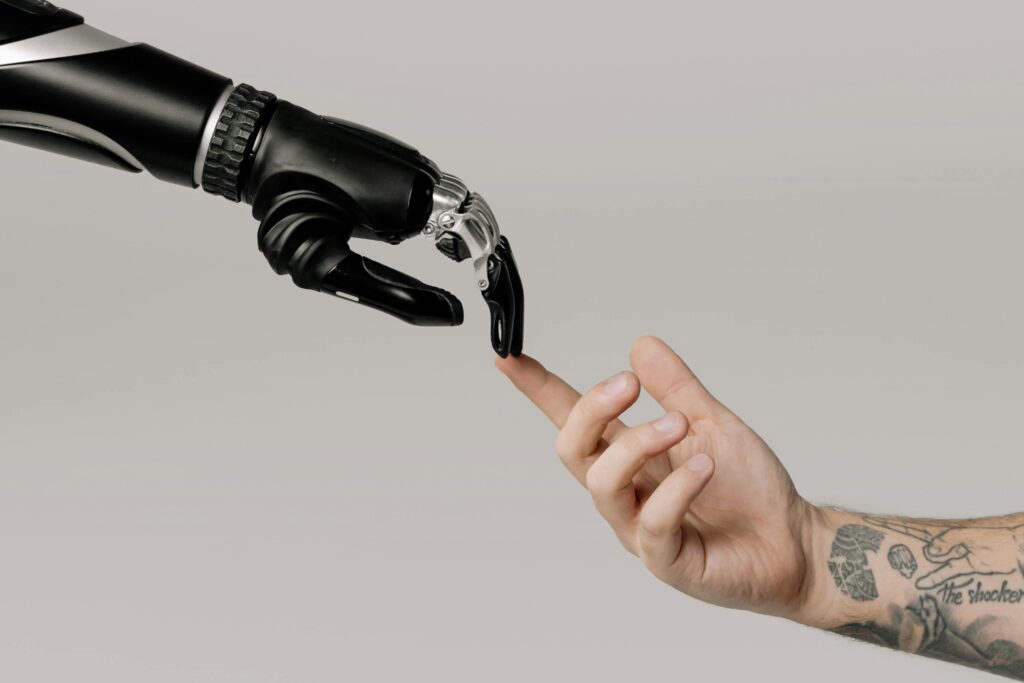
Educators play a vital role in ensuring that AI is used fairly, transparently, and with student autonomy and dignity in mind. As Gillies (2016) reminds us, cooperative learning thrives on structured, real-world interaction, something AI alone cannot replicate.
Shalan’s Blog Post #2 Reflection
When discussing cooperative learning, I agree that it creates space for students to feel more open and comfortable sharing, especially when the class is divided into smaller groups. It also encourages full participation, and group roles tend to form naturally.
Having a peer who is confident with the topic can be helpful, but I also see it as an opportunity for the group to discover the answer together as a team.
I agree that the best approach depends on the learners, as everyone learns in a unique way. My ongoing challenge has been figuring out how to accommodate all learning styles, but I really like the idea of blending strategies to meet a variety of needs.
For our topic, do you think AI tools in education can support or hinder cooperative learning? In what ways might they enhance collaboration or unintentionally replace it?
Hi Chelsey,
I enjoyed how you shared your journey with social media. It made your reflections feel relatable and genuine. Your point about being intentional with what we follow resonated with me, especially how you’re curating accounts around your career interests. I also appreciated how you included the conversation about Emma Chamberlain and Mac DeMarco. It added a unique, real-world perspective to your post.
I wonder if you could expand a little on your section about digital literacy by adding a quick example of how someone might actively break out of an echo chamber or fact-check content they see online? That could give readers something practical to try.
Your post flows well, and the visuals complement your writing. Excellent work, your perspective comes across as honest and encouraging!
Hi Navya,
I connected with your original view of social media as mainly for fun or keeping up with friends, I felt the same before this course. I appreciated how clearly you explained your shift in perspective, especially the influence of Shelley Moore’s video. Your point about social media amplifying diverse voices and supporting inclusivity stood out to me. I also liked how you described your WordPress blog becoming more than an assignment; it’s inspiring to see you using it as a space for ongoing reflection and professional growth.
I also found your explanation of Personal Learning Networks (PLNs) both clear and practical. It made me think about how I could be more intentional in building mine by following people and communities that align with my goals.
I wonder if the section on building a PLN could be even more effective with a short example of a specific account, group, or interaction that has influenced your learning so far. Adding that might help readers better visualize how PLNs work in real life.
Your blog layout is clean and easy to follow, and the images complement your writing well. A small suggestion, maybe include more visuals to break up the writing.
Great job on this honest, thoughtful reflection!
https://onlineacademiccommunity.uvic.ca/boshrasaravi/
Hi Bosha,
I’m glad you’re so passionate about helping children and their families succeed. It’s my passion too, which is why I’m going to school to become an elementary teacher! I agree with what you said-learning is always ongoing, and it’s important to stay relevant in any field. Things are constantly changing.
Yes, I can relate. During COVID, when in-person learning wasn’t possible, social platforms were how I communicated with friends and family. It was an interesting time; however, it opened the door to remote work, digital communication tools, and online businesses.
It’s great to see you using social media as collaborative tools, like Facebook. I also use groups; however, I mainly rely on Instagram as a tool.
I read that you have a busy schedule juggling many things at once. I can relate; I also juggle 50 hours a week, three UVIC courses, a boyfriend, family, and friends. But if it weren’t for online courses, it wouldn’t be possible to take courses during such a busy time. I’m grateful they give me more flexibility to complete assignments.
I appreciate you sharing that, as an educator, you keep your account private. I need to do this too; however, I need to figure out how because my account is a business account. Please let me know if you have any suggestions on how to do this while maintaining privacy.
I agree we need to learn these technology skills so we can teach future generations and keep them educated. Great job on your post, and the content is excellent. One suggestion is to align photos with the text or even use a text column paired with images, as this could help make it look more organised.
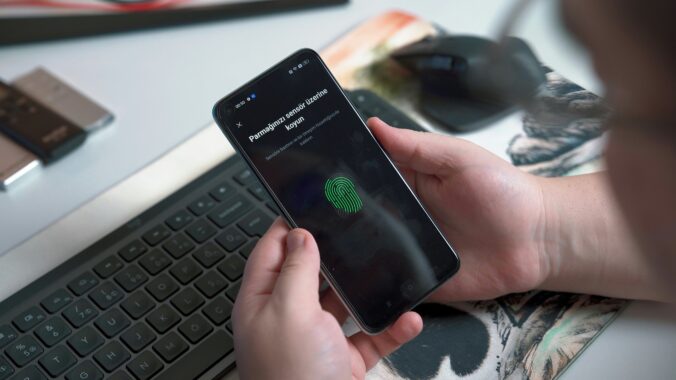
Blog # 2
WHAT IS DIGITAL IDENTITY?
In the video, Eric Stoller discusses what Digital Identity is. He explains that it’s our online footprint, everything you post, share, how you interact online, and how you use digital tools. My online presence encompasses various platforms, including Instagram, Facebook, Twitter, Snapchat, TikTok, LinkedIn, personal websites, and more. To be honest, I never really thought of it as my identity, but it is, in fact, who I am. I include posts about loved ones, my hobbies, food, my career, accomplishments, and more.
PERSONAL DIGITAL IDENTITY VS. PERSONAL IDENTITY
In this module, we examined digital identity, personalized learning, and the influence of our digital footprint. One key point for me is recognizing the importance of managing personal and professional digital identities separately.
My professional digital identity is shaped by platforms like LinkedIn, where I showcase skills, connect with colleagues, and develop a career-focused presence. This space is intentional; it’s like my resume in action. I use it to update my resume, connect with other employers and professionals, and to help me find jobs or for others to find me.

In contrast, my personal digital identity is present on platforms like Instagram, where I share hobbies such as hiking, travelling, and spending time with friends and family. Although it’s personal, I stay mindful that future employers might see it. That’s why I make sure all posts reflect positivity and who I want to be perceived as an individual.
To maintain boundaries and align with my goals, I follow these steps:
- Keep separate accounts for personal and professional purposes.
- Set personal accounts to private and carefully manage my friend list.
- Think before posting: “Would my grandma or a future employer approve?”
- Share content that represents the values I want linked to my name online.
Balancing these identities helps me control how I am perceived in both social and professional contexts.
Life long learning is crucial
ERIC STROLLER
Social media reveals if you have a passion for lifelong learning. You can see who is growing and adapting and who is not through social media. For example, as a future teacher, you might see me most often on LinkedIn discussing inclusive education or new technology tools for teachers. This shows my growth and keeping myself relevant in the digital professional world.
Hello everyone!
My name is Kathryn Gullackson, and I’m excited to be part of this course with all of you. I’m enrolled in the Elementary Curriculum Bachelor of Education (BEd) program at the University of Victoria, and I plan to graduate in 2027. One of my most memorable educational experiences so far was completing my practicum at Spencer Middle School in Sooke, where I had the privilege of teaching Grade 7 students. During my practicum, I utilized Canva, Google Classroom, and Kahoot for lesson planning and taught students how to use these tools for various assignments. Initially, I struggled to set up and explain how to use online platforms, but the process became more efficient and organized overtime.
Maintaining a professional and personal online presence is important to me because it reflects who I am, both as a future educator and as a person. I enjoy sharing my hobbies, such as hiking, exploring new places, engaging with others, and documenting my educational experiences with photos on Facebook and Instagram. I aim to present myself authentically both professionally and personally online. Honestly, I don’t have anything inappropriate on my social media. Still, if a future employer views it, I want them to see the same positive image I try to project and not judge me unfairly.
Below is a photo from my PE “Mock Teacher” session at UVIC highlights the fun and positive energy I love sharing in person and online!
Throughout my educational journey, social media acts as a journal, motivating my progress. It allows me to connect with colleagues and academic professionals, particularly through platforms like Instagram, which I use frequently to build a support network on my path to becoming a teacher. To maintain a positive online presence, I keep content uplifting and avoid politics or negativity, utilizing it to network and engage with like-minded individuals.
Tips for Managing Your Digital Identity
- Google Yourself: Take inventory of how you present yourself online
- Set goals: Digital identity goals.
- Be authentic: Represent yourself online as you are in real life.
Here is a picture of my google search

Overall, my digital identity seems to align with my goals and aspirations, but I am hoping to improve my digital identity across all platforms.
Classroom Management: My Biggest Practicum Challenge
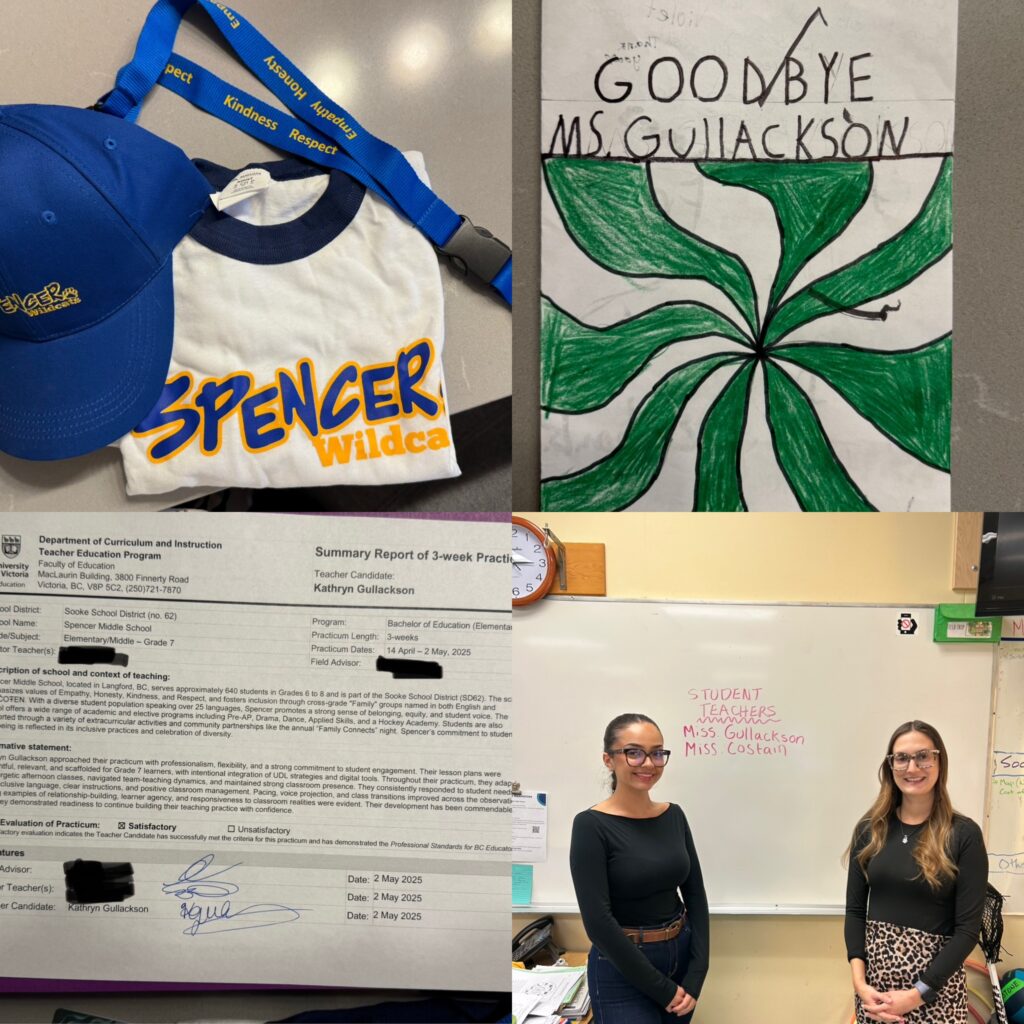
During my practicum in the Grade 7 classroom at Spencer Middle School, I found classroom management to be a significant challenge for fostering effective learning. I struggled to balance maintaining authority with building positive relationships with students. One of the most difficult aspects was redirecting off-task behaviour without disrupting the lesson flow or sounding too harsh.
During my practicum, I found classroom management to be a significant challenge in learning. I struggled to balance maintaining authority with fostering positive relationships with students. One of the most difficult aspects was redirecting off-task behaviour without disrupting the lesson flow or sounding too harsh.
To address this, I closely observed my mentor teacher. I paid attention to his tone, body language, and the specific language he used when addressing students. He used a calm but firm voice when handling interruptions and would simply stop teaching and wait quietly, giving students a non-verbal cue to refocus. He often used the phrase “I’ll wait,” which conveyed clear expectations without escalating the situation. I also sought his feedback on my own classroom presence. One of the most helpful pieces of advice he gave me was to learn when to “pick your battles.” I quickly realized that if I tried to address every disruption, I would never be able to complete a full lesson. My lessons often ran over time due to behaviour management.
What made classroom management particularly challenging was recognizing that different strategies work for different students. There is no one-size-fits-all approach. I had to discover what worked best for each student. For example, some students needed to be separated from their peers to focus, while others just needed subtle redirection. Some responded best when I addressed behaviour directly, while others were better managed through strategic ignoring to avoid giving them the attention they sought.
To support my learning, I also explored articles and videos on proactive management techniques. From this video here I learned the following, where I applied some of these techniques during my practicum:
Classroom Management Strategies
Top 10 CLASSROOM MANAGEMENT Tips in 10 Minutes I Thom Gibson
From the video Top 10 Classroom Management Tips in 10 Minutes, I learned the following tips:
- Seating Chart: Have a seating chart at the start of the school year, but change it as needed throughout.
- Brain Break: A 3–5-minute break during longer blocks.
- Use Noise: If students are on task but the noise is too loud, write ‘noise’ on the board and erase a letter if the noise continues. If you say ‘no,’ there is a 5-10 minute silence, and students work individually.
- Avoid calling students by their names: Instead, say, “I’m still waiting for three students to get their books out,” or, “I’m waiting for two students,” then count down until there are none left.
- Starbucks/Work Mode: Can be used in class and with whomever students wish. If they are off task, ask them to return to their seat.
- Think-Pair-Share: Allow students multiple opportunities to speak. Have them think individually, share with their neighbour, and then ask if anyone wants to share with the group.
- Handling disrespect: Do not respond with more disrespect; politely ask the student to step out into the hall. Do not address it openly in front of everyone.
- Hall Refocus Form: Have students fill out a form explaining what happened and why happened.
By combining observation, feedback, and research-based strategies, I learned that effective classroom management is a skill that can be built with time, patience, and reflection.



